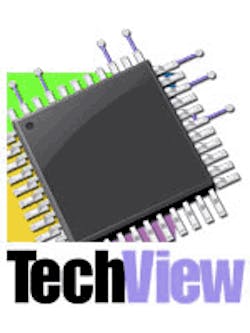LRM for the SystemC AMS extensions
The Open SystemC Initiative, the industry association that has shepherded various standards initiatives involving the SystemC language, is on the move again and has recently released its SystemC Analog/Mixed-Signal (AMS) extensions language standard. The AMS 1.0 standard is the first modeling language targeting system-level design and verification to describe analog/mixed-signal behavior as a natural extension to existing SystemC-based design methodologies.
Building on work that’s been ongoing for several years, the Analog/Mixed-Signal working group within OSCI completed public review on an AMS Draft 1 kit about a year ago. As a result, OSCI has now developed a user’s guide for the AMS 1.0 standard and has also updated the AMS language reference manual (LRM). The LRM introduces new execution semantics for efficient simulation of discrete- and continuous-time behavior.
The SystemC AMS extensions standardize new class libraries that are layered on top of the SystemC language standard. These libraries feature specialized AMS system-level design and modeling methods. “We will have a kit that includes the existing requirement spec, giving users background and history on why we are doing this,” says NXP Semiconductor’s Martin Barnasconi, chairman of OSCI’s AMS working group. “The updated LRM is available and can be used to make an implementation. The long-anticipated user’s guide provides background on how you actually use the SystemC AMS language standard.” The kit is available for download now at www.systemc.org.
The LRM for the SystemC AMS extensions (see the figure) spells out the classes and interfaces involved. “One of the goals the working group has achieved is to build or define an AMS library, or APIs (application programming interfaces), that can be linked in to any simulator that’s compliant with the IEEE 1666-2005 SystemC standard,” says Forte Design Systems’ Mike Meredith, president of OSCI. “As a result, users don’t have to dink around in the guts of the simulator to make it work.”
The user’s guide is a comprehensive document that explains the basics of the AMS extensions. “There are some fundamental differences in modeling compared to the digital domain,” says Barnasconi. “We have to explain the basics of the time and frequency modeling domains.” With the addition of the AMS extensions, OSCI says that SystemC is the first AMS language offering frequency-domain analysis.
“We’re using the complete structure you use for the time domain, so we can augment models with frequency-domain descriptions as well as some electrical primitives,” says Barnasconi. “This allows us to look at problems from both the time and frequency domains.”
The user’s guide includes many coding examples intended to aid designers who may be out of their comfort zone in the AMS realm. “What the AMS extensions do is fill a gap in the design ecosystem by inserting the missing abstraction at the architectural level,” says Barnasconi. “With AMS 1.0 and SystemC, you can perform hardware/software co-design of your system with all of the elements in place.”

